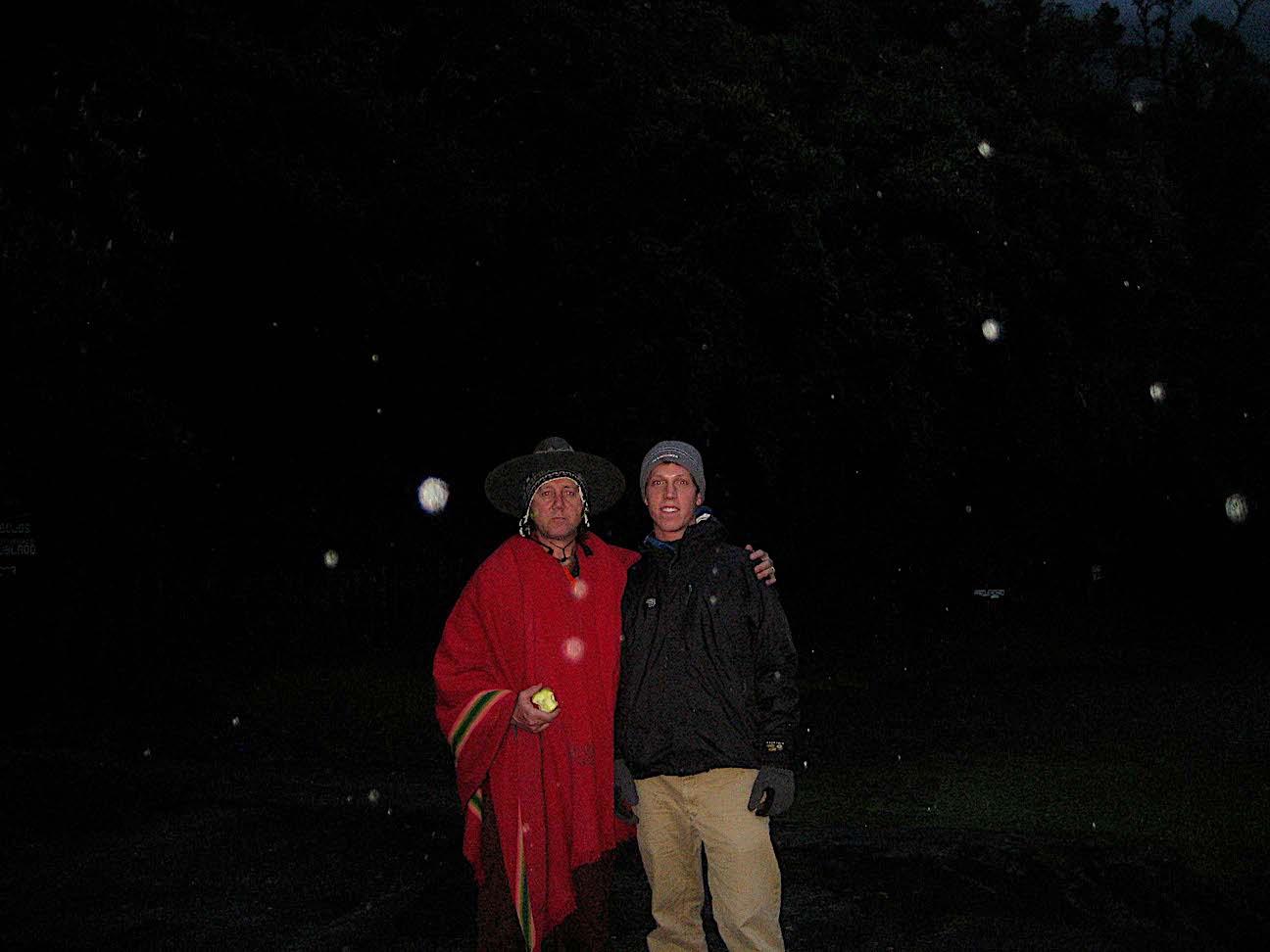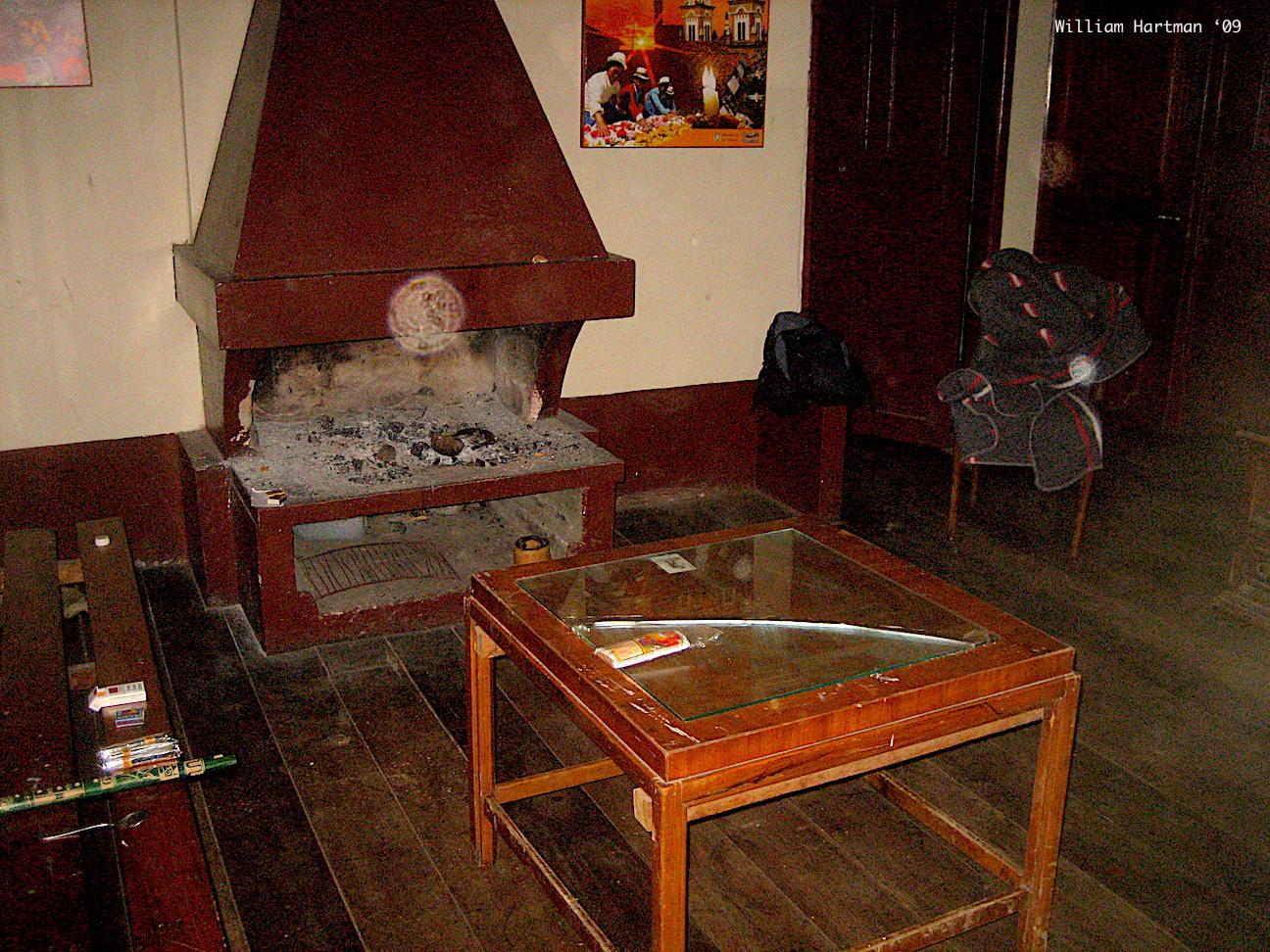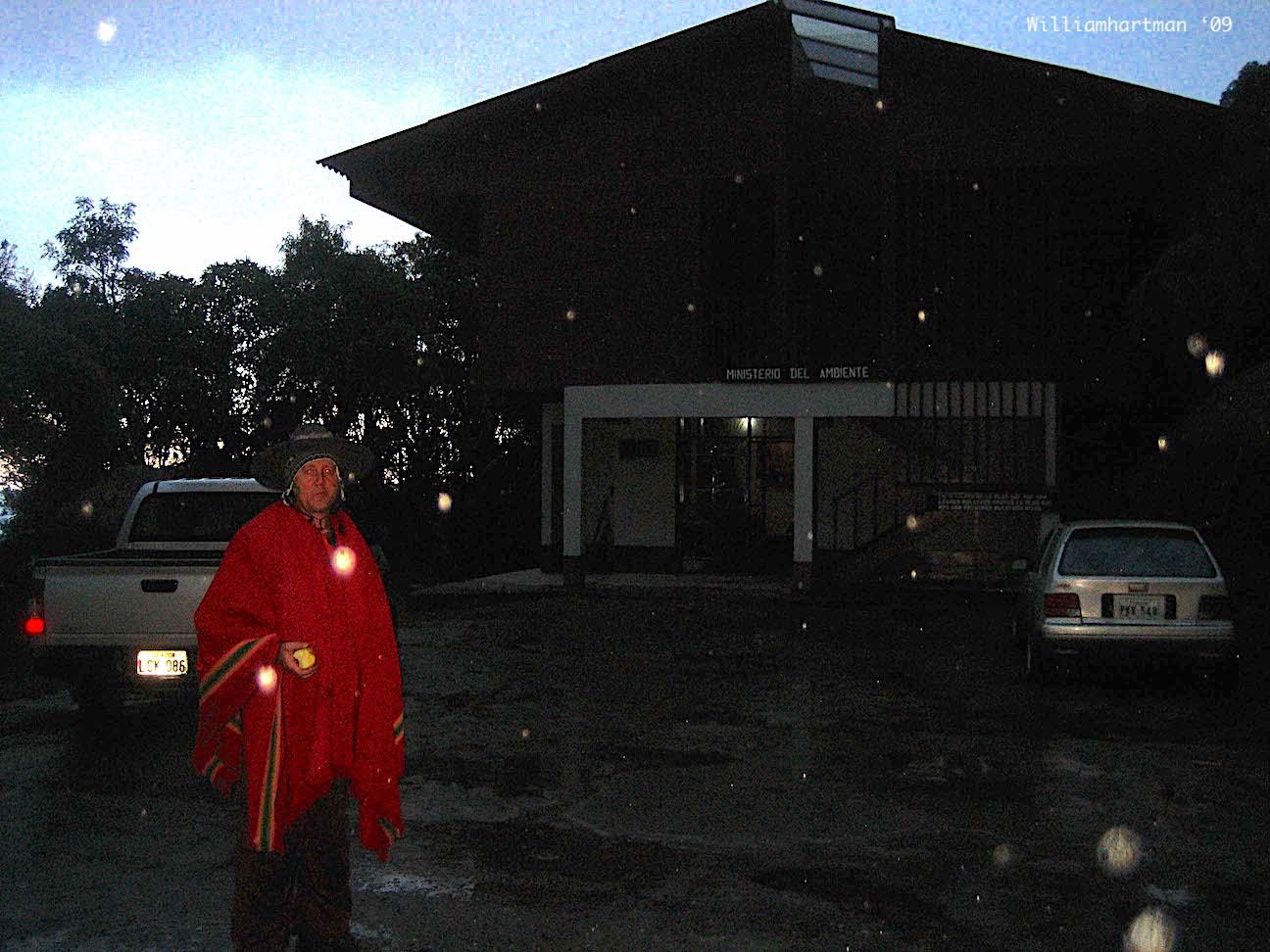The Loja shamanic experience
 By William Hartman
By William Hartman
This experience began on a Thursday night when a fellow English teacher at my language school shared his passion for painting spiritual visions experienced among various indigenous communities throughout the Americas with the city of Loja through an art exhibition. Pausing to take in each work, I was amazed by the powerfulness of the indigenous symbols they contained. Although many questions were raised about the use and mix of sacred symbols from various cultures, his passion and creativity gained him a deep respect in my eyes.
The following Saturday, after my two housemates left to travel to nearby towns, I decided to walk over to the cheapest internet place in Loja. I responded to a few emails, in one of which I mentioned that I hadn’t had any profound experiences as of late, but on my way to the city center, the most talkative laundry mat owner I’ve ever met mentioned that this painter I teach with was planning to meet up with a local Shaman for a ceremony. This information combined with my desire not to walk around in the rain that
Loja- Ecuador 24/05/’09 Alann De Vuyst and author William Hartmanwas increasing in intensity and convinced me to pass by my language school to inquire
Upon reaching the top floor I met my colleague on his way down to a car that was waiting outside to take him into the Podocarpus nature reserve where the ceremony was to be held. After a short hesitation, something about his willingness to include me convinced me to take the plunge, although at the time I had no idea what I was getting into.
 Alann De Vuyst in red poncho and one of the interns there, who did not participate in the ceremony that night.
Alann De Vuyst in red poncho and one of the interns there, who did not participate in the ceremony that night.
Stopping by my house to pick up some warm clothes, we gradually made our way to a shelter high up in the Andes, stopping at several stores to purchase elements for the ceremony. By the time we arrived night had fallen and in the haste of putting things together I got my first feeling that the local shaman and his friends were less than well experienced. Despite the rush, by 6pm we had begun the initial rounds of the ceremony, passing tobacco around our circle, drinking San Pedro, and sharing our thoughts about four life phases: infancy, childhood, adulthood, and rebirth. As in my sweat bath (sweat lodge) experience with the Lakota Sioux on the Rosebud reservation, tobacco was integral both as an offering and as a manner of organising how members expressed their thoughts.
The night continued to progress and the others’ inexperience revealed itself in an almost childish necessity for ritual and procedures. In turn, my painter colleague who had also gained shaman status in his many years of experience in various indigenous ceremonies began to confront the others about their incessant use of insincere chants, disruptive sounds, and their insupportable need for control. Not being a scholar myself, I will just state that while the others claimed that this is was the ceremony they were taught, my colleague argued that it is the lack of dogma and regulation that separates shamanism from religion.
 The room in which the ceremony happened and the chair from where William observed it.
The room in which the ceremony happened and the chair from where William observed it.
The tension continued to grow as the painter drifted off closer and closer towards a state of trance and the others attempted to impede his efforts through commands, loud noises, and physical positioning. The degree to which these efforts were conscious wasn’t completely clear, but as I sat observing the scene with a lucid consciousness, it was fascinating to see the power dynamics unfolding before me. I soon decided that my personal experience with San Pedro would have to wait, having only experienced a slight enhancement in visual and auditory perception, and I kept to watching as the painter fall deeper into trance and the others feel threatened by the uncontrollability of the “spirits” he began to channel.
While the initial persona that the painter took on or spirit that he channeled confronted the fear of uncertainty and the unknown that emanated from the others, it eventually evolved into an antagonistic persona that took pleasure in evoking their fear. I continued to watch without fear, as I could see that this persona was feeding off of the fear each held of himself. They were terrified of letting go of what their masters had taught them; terrified of an experience that they had not learned about. A fear that quickly converted them back into good Catholic boys who shouted out Christ’s name in an effort to exercise the antagonising persona of the painter who they feared was Satan. It reminded me of a game of capture the flag, when I was little I would venture across the dividing line with confidence until someone from the other team got close enough to tag me, at which point I ran like hell back to the safety of my side.
 Alann De Vuyst ready to head back to Loja urban life and relishing an apple for breakfast.
Alann De Vuyst ready to head back to Loja urban life and relishing an apple for breakfast.
Having abandoned my own San Pedro experience, I took to trying to help the painter and the spirits that spoke through him to open the eyes of these other people who seemed so out of place in a shamanic event. At one point I had to hold the hand of one man, consoling him with less antagonistic reiterations or interpretations of what the persona in control of the painter was trying to convey by force. At one point the shaman claimed that the energy of this persona had crushed his hand, a complaint that continued throughout the night and instigated a stronger assault by the persona acting through the painter, which I later was told was a jaguar spirit, when he was asked to cure the injury. I saw this complaint as incredibly symbolic since the shaman continued to refuse to let go of control over his own experience and that of his friends, and since the antagonism of the painter’s persona was indeed meant to force him to let go. Eventually the sun rose and the ceremony was ended by the now bitter shaman without having completed the fourth stage of rebirth, which now that I think about it was also quite symbolic. In analysis of this experience I would like to describe the process I observed of achieving a state of trance. As I said, we began a process of four cycles of reflection that represented the four stages of life, at the initiation of which we all snorted two spoonfuls of what I think was tobacco water. This moderately uncomfortable action had an immediate effect similar to that of breath control in meditation of bringing one’s thoughts into the present moment. The shaman and the painter then began to lead us in songs and chants. In some of these vocal projections I felt a reverberation in my chest, which may have been an effect of the combined deep tones of the chants and drum, and the higher pitched maraca (not sure what it actually was, but this gets the idea across) and the San Pedro. These reverberations brought my attention inward and I gradually felt myself begin to drift from a state of rationality to pure sensory intake, similar to the Eastern idea of acceptance and elimination of analysis and judgment, which can be achieved by expanding one’s focus to its fullest limits. Here I say I only began to drift off, because it was at this point that I noticed the building confrontation and took to pure observation. I then watched as the painter began channeling his thoughts through the repetition of phrases and sounds that he associated with, for example, the fire. This appeared to have the effect of over stimulating, through excessive use, a specific neural circuit, effectively shutting it down through the commonly studied ??? (I can’t think of it, but it can be seen online by searching for “pink dot effect”). This cerebral disabling might have allowed him to achieve a sort of pure connection with an idea or image, to which he then gave personality and voice. He uses the indigenous language of “spirit” and holds the belief that the spirit that speaks through him chooses to take power over him and exists outside of his person.
After a bit of reflection I’ve thought about three explanations for this state of possession. One being his explanation that these are separate entities that take control over him, two being that he himself achieves a pure experience of some idea or image and from his own subconscious he gives it a persona, and three being that he forms a pure
connection to a Jungian shared consciousness. The third would imply that these entities or spirits do in fact exist, but that their existence is in the consciousness of humanity. Although this third option my seem out of place to some who read this, his later descriptions of the existence of these deities as powerful and fear inspiring, reminded me of a more generally held, cultural perspective. And both the first and second of these explanations are supported by his speaking in tongues: in the first case, these languages evoke the infinite existence of the spirits separate from individual human experience, whereas in the second case, the avoidance of language use in verbal communication would allow for a “purer” connection, uncorrupted by subjection to Spanish or English grammatical rules or by the word association of listeners. I will add that after observing how one of the others achieved a similar state of trance during the night, taking on a persona that protected his friend the shaman by interfering with the artist’s verbal attack on his need for control and routine, that I’m inclined to believe that these trances are the act of creating a persona that conveys a deep subjective connection with a thought, object, or idea. Then again, this claim should be modified by adding that I don’t plan on applying this decision to more than this one experience I’ve had. In fact, I look forward to any future opportunities to experience both San Pedro and trance in the future.
